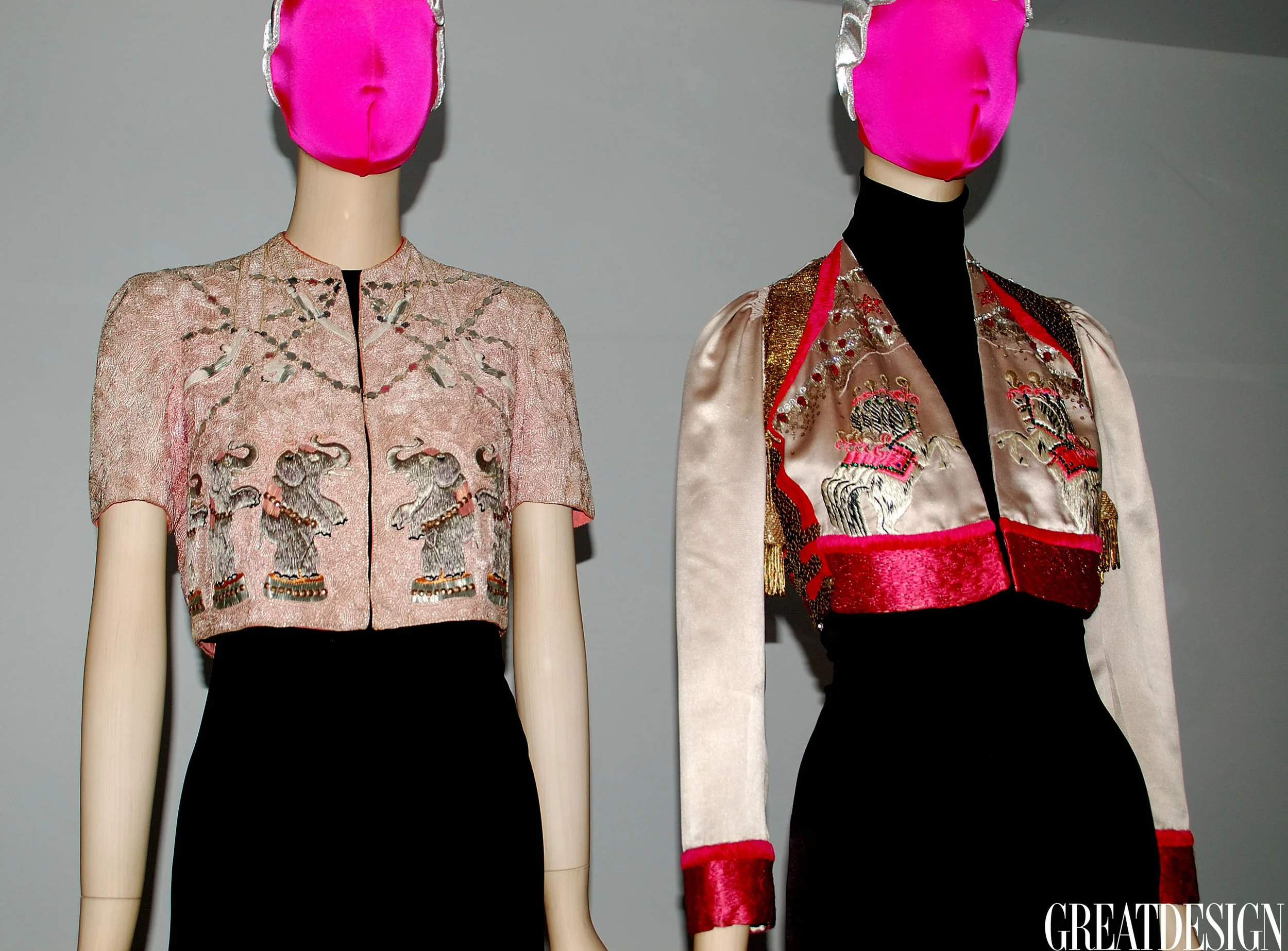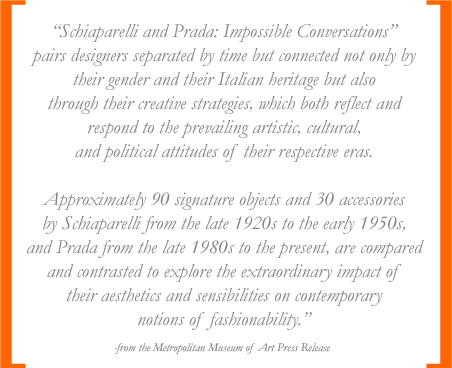Feature image courtesy of The Metropolitan Museum of Art/BFAnyc.com
This story was originally published May 9, 2012 about the opening night of the exhibition on view at The Costume Institute, a department of the Metropolitan Museum of Art in New York City (it ran May 10-August 19, 2012).
Fashion people are no different than sports fans, cooking fanatics, Beltway handlers or PTA parents. This is the last thing they want to hear, but assuming that pants are still put on one leg at a time (they are, I own a few pairs, but things change and sometimes it’s hard to keep up), it is true. Each group has a unique and fascinating approach to how they choose to see their selected area of interest or expertise. They can, on occasion, become too close to their diversion and lose their objectivity and balance, but that is why we have critics and spouses. It all balances out in the end.
Entrance to the "Impossible Conversations" Exhibition
The exhibition is inspired by a satirical series published throughout the 1930’s in Vanity Fair entitled “Impossible Interviews”, illustrated by Miguel Covarrubias. As a main focal point for the show, legendary producer and director Baz Luhrmann has directed a series of short films under the name “Impossible Conversations”, which is exactly what it sounds like. Baz is creating discourse on film between two people who should have had the chance to talk, but due to the constraints of time travel or the rules of physics, did not.
In actuality, this article is less a review of my experience at the exhibition and more about two self possessed ladies and breaking rules. Miuccia Prada (alive) and Elsa Schiaparelli (not alive) understood the aesthetics of great design and marketing importance of disobeying. As Marilyn Monroe, a woman known for her success against the odds said “if I’d obeyed all the rules, I never would have got anywhere.” With categories like “ugly chic”, “hard chic” and “the surreal body” in the exhibition of their work, it’s easy to see that these two women held the same values.
Prada dress with Schiaparelli image
In this excerpt from "Impossible Interviews", published in Vogue in 1936, Schiaparelli’s stubborn honesty gets the best of her fantasy opponent, Stalin.
Prada carefully keeps from getting painted into a corner by telling us that she is not an "artist" – in fact she is quoted as saying the term itself seems old fashioned. Perhaps this is true, but one cannot argue that there isn’t a clear artistry in her vision and execution. It makes me think, though, who gets to define the contemporary ideal of “ugly”, a word that is carefully placed in and around this exhibition? What is the role of ugly in fashion, and is it only acceptable or powerful when juxtaposed against something beautiful? We either wince or grin when we see the young colt out with the wizened daddy, why not when we see severe or gaudy textiles masterly woven and perfectly tailored into articles of clothing? When it comes to Prada, I hear the word handsome more than the word beautiful, thereby keeping the proceedings honest, which, let’s face it, adds to its appeal. She is as serious as a scientist, which we appreciate to be a different region of the brain than the part an artist accesses and employs.
Prada dress with Schiaparelli image
Schiaparelli was an inventor, one who inspires. Often, her clothing walks right up to the line of folly and over-ornamentation, but rarely do you feel that it has crossed a boundary. You never want for more and today while viewing the collection I never felt over-served. There is a visceral magic to her creations but I will admit that, at times, her choices felt forced and over thought. That stated, who gets to decide if a giant lobster appliquéd onto the front of a gown is sublime or ridiculous? We all do, and let’s not forget that is the fun part. It elevates the conversation and so few get hurt (unlike being around those dangerous PTA people).
Video: Prada and Schiaparelli at The Metropolitan Museum of Art
"Ugly Chic", directed by Baz Luhrmann. With Miuccia Prada and Judy Davis (as 'Elsa Schiaparelli')








